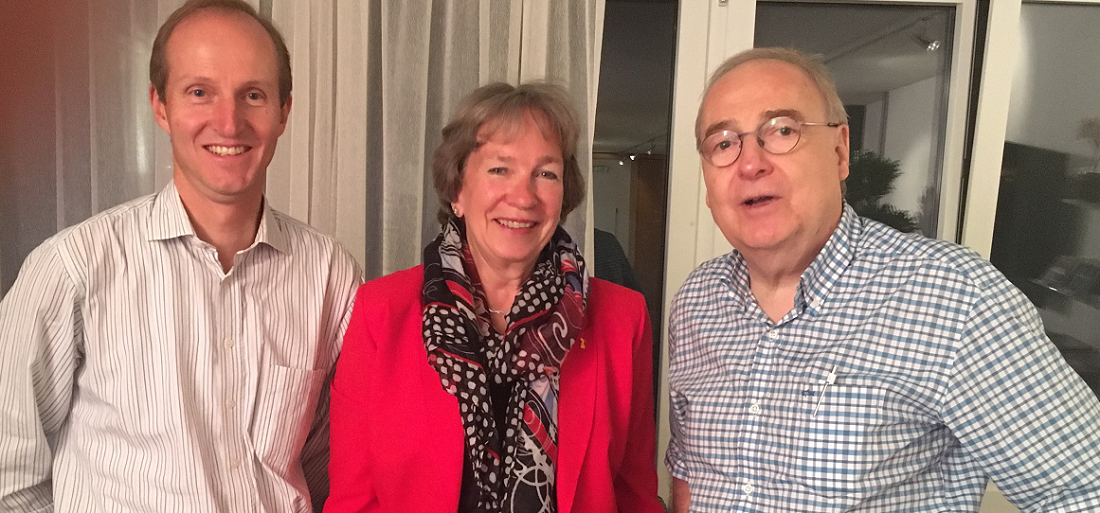Women in FAI: New CIMP President Marja Osinga-Meek shares her aims
After several years as Vice-President, Marja Osinga-Meek has, in 2019, been elected President of the FAI Medico-Physiological Commission (CIMP).
A glider pilot and a physician, Marja’s ‘day job’ is in a geriatric clinic, something she balances between her roles of President of the Medical Board of the Royal Netherlands Aeronautical Association and as an Aeromedical Examiner. For Europe Air Sports, she is a member of the Rule Making Groups of EASA, representing the General Aviation as well as participating in aviation medical assessments for the Ministry of Transport Board of Appeal in the Netherlands.
Marja kindly spent some time chatting about her new role:
Firstly, many congratulations on being elected as the new CIMP President. Could you share your ideas on what you would like to achieve within the role?
Thank you very much, it is a great honour and pleasure to be elected as the new FAI CIMP President. During my years as vice-president I became familiar with the structure, procedures and aims of the CIMP. With the dedicated members of the CIMP we have had constructive discussions on issues related to health, performance, safety and requirements for air sports pilots.
It is important to bring together the delegates of the FAI member countries in order to share knowledge and scientific developments.
What are the main challenges you will need to overcome?
My aim is to increase the number of delegates at our meetings and to involve more colleagues – physicians as well as psychologists - especially from other continents: Asia, South America, Africa, Oceania.
I also wish to build up statistical data from air sports organisations. Figures on flight safety issues are very important in order to define the level of acceptable risks for pilots and we need to set up appropriate medical rules, dependent on the complexity and weight of the aircraft.
We are looking forward also to the FAI World Air Games 2022 in Turkey. As in Dubai in 2015, the CIMP will contribute to an aeromedical congress or safety seminar. Preparations for this are in progress.
How do you stay up-to-date with the latest developments?
I am able to attend national and international aeromedical congresses, and I also take part in a scientific working group. As one of the medical assessors for air sports, I have many contacts with individual sports pilots, medical examiners and club officials, to share information and news.
As a glider pilot yourself, what new innovations with medical technology do you find most exciting, and which are going to improve aviators’ competition performances?
Pilots with diabetes mellitus sometimes are dependent of the use of insulin and they are often declared unfit when insulin is the only possible treatment. Recently, systems have been developed to monitor the blood glucose level continuously. In combination with an insulin pump, there is no need to take blood samples to control blood glucose level. This may allow pilots with diabetes mellitus to keep flying under new rules as well as helping them to perform better as they have a more stable glucose level without the risk of a hypo- or hyperglycaemia (too low or high blood sugar level).
Recently, the Airbus Perlan Mission II, a glider with a pressurized cabin and a close-loop rebreather system, soared to the highest altitude ever reached on a glider, 65.605 feet (19.9 km). This project contributes to a better understanding of human performance under extreme atmospheric conditions and could have benefits for other aviators’ competition performances.
What are the latest updates to the FAI anti-doping programme?
In the last CIMP meeting we discussed the problem of the use of testosterone for transgender pilots. Testosterone is on the WADA prohibited list but when this medicine is clinically necessary for a pilot, a TUE (Therapeutic Use Exemption) can be obtained. CIMP formed the advice to let the FAI EB know how to handle this issue for different air sports.
Do you feel that there is a move to improving diversity within sports politics? And what does diversity bring?
To reflect the great variety in air sports it is important to support all divisions for a better understanding and improving performances and safety. Interaction between different sports divisions can improve the opinions and knowledge on human performance and medical issues.
Diversity opens our minds and gives new opportunities for medical and physiologic research.
How can the FAI help to increase the participation of women in air sports?
Keep women active in air sports is a problem, because although many women start flying, the majority stop - for several reasons. Special attention and coaching by more experienced female pilots and role models could help.
Similarly, if female pilots feel involved and can be active in the board or commissions, they will be more likely to continue flying activities.
The FAI can help to increase the participation of women by expanding the FAI website of Women on Wings and to encourage member countries to bring the activities under the attention of all flying ladies.

From L-R: Grégoire Schrago, CIMP Secretary. Marja Osinga-Meek, President and René Maire, President of Honour

